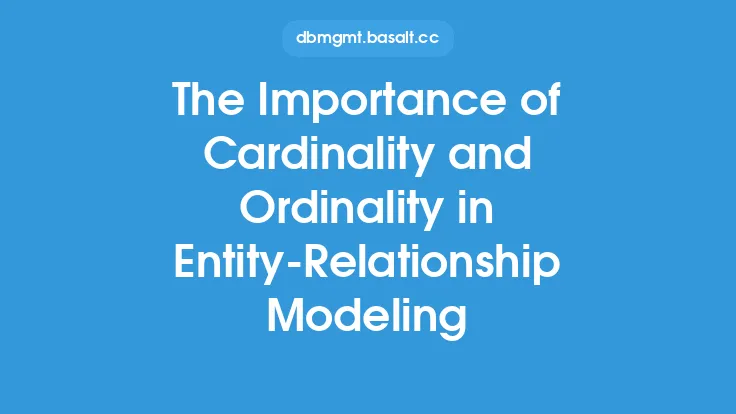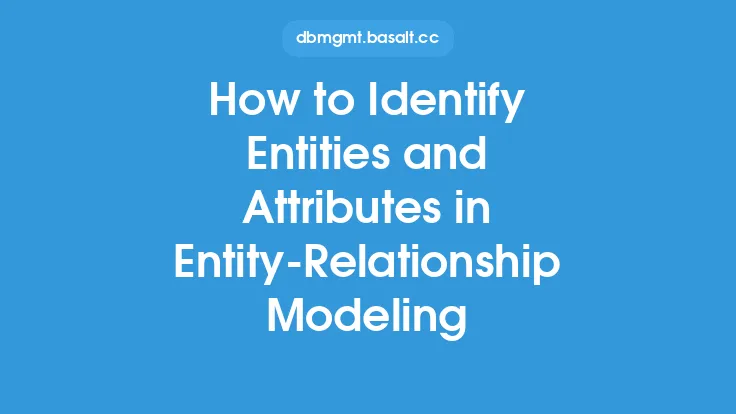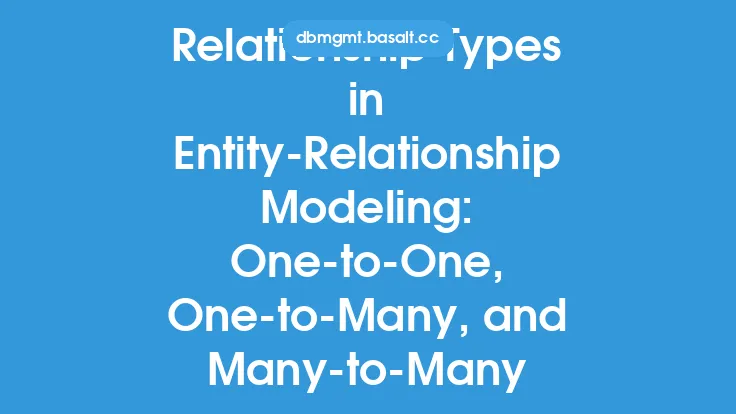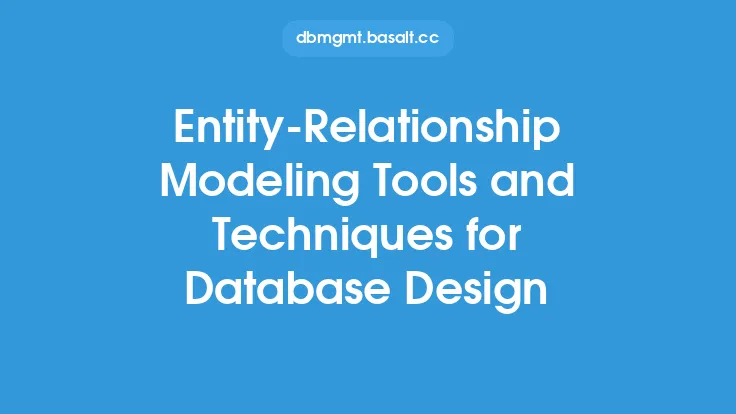Entity-relationship modeling is a fundamental concept in data modeling that helps to visually represent the relationships between different entities in a database. It is a crucial step in the database design process, as it allows designers to identify the key entities, attributes, and relationships that will be used to store and manage data. In this article, we will delve into the principles of entity-relationship modeling, exploring the different components, notations, and techniques used to create effective entity-relationship diagrams.
Introduction to Entity-Relationship Modeling
Entity-relationship modeling is based on the concept of entities, which are objects or concepts that have independent existence and can be described with attributes. Entities can be tangible, such as customers or products, or intangible, such as orders or transactions. The relationships between entities are also crucial, as they define how the entities interact with each other. Entity-relationship modeling provides a way to represent these entities and relationships in a graphical format, making it easier to understand and analyze the data.
Components of Entity-Relationship Modeling
There are several key components of entity-relationship modeling, including entities, attributes, and relationships. Entities are the objects or concepts that are being modeled, and they can be represented as rectangles or boxes in an entity-relationship diagram. Attributes are the characteristics or properties of an entity, such as a customer's name or address. Relationships are the connections between entities, and they can be represented as lines or arrows in an entity-relationship diagram.
Notations Used in Entity-Relationship Modeling
There are several notations used in entity-relationship modeling, including Chen's notation, Crow's Foot notation, and Bachman's notation. Chen's notation is one of the most commonly used notations, and it represents entities as rectangles, attributes as ovals, and relationships as lines. Crow's Foot notation is similar to Chen's notation, but it uses a different symbol to represent relationships. Bachman's notation is an older notation that is still used in some cases, and it represents entities as boxes, attributes as columns, and relationships as lines.
Types of Relationships in Entity-Relationship Modeling
There are several types of relationships that can be represented in an entity-relationship diagram, including one-to-one, one-to-many, and many-to-many relationships. A one-to-one relationship exists when one entity is related to only one other entity, such as a customer and their address. A one-to-many relationship exists when one entity is related to multiple other entities, such as a customer and their orders. A many-to-many relationship exists when multiple entities are related to multiple other entities, such as customers and products.
Entity-Relationship Diagrams
An entity-relationship diagram is a graphical representation of the entities, attributes, and relationships in a database. It is a powerful tool for database designers, as it allows them to visualize the data and identify potential issues or inconsistencies. Entity-relationship diagrams can be created using a variety of tools, including graphical editors and database design software.
Steps to Create an Entity-Relationship Diagram
Creating an entity-relationship diagram involves several steps, including identifying the entities, attributes, and relationships, and representing them in a graphical format. The first step is to identify the entities, which involves determining the objects or concepts that will be represented in the database. The next step is to identify the attributes, which involves determining the characteristics or properties of each entity. The final step is to identify the relationships, which involves determining how the entities interact with each other.
Best Practices for Entity-Relationship Modeling
There are several best practices to keep in mind when creating an entity-relationship diagram, including keeping it simple, using clear and concise notation, and avoiding redundancy. It is also important to ensure that the diagram is consistent and easy to understand, and that it accurately represents the data and relationships in the database.
Common Mistakes in Entity-Relationship Modeling
There are several common mistakes that can be made when creating an entity-relationship diagram, including failing to identify all the relevant entities, attributes, and relationships, and using inconsistent notation. It is also important to avoid over-complicating the diagram, as this can make it difficult to understand and analyze.
Tools and Techniques for Entity-Relationship Modeling
There are several tools and techniques that can be used to create and analyze entity-relationship diagrams, including graphical editors, database design software, and data modeling tools. Some popular tools include Entity-Relationship Diagram (ERD) tools, such as ERwin and ER/Studio, and data modeling tools, such as PowerDesigner and Enterprise Architect.
Conclusion
Entity-relationship modeling is a powerful tool for database designers, as it allows them to visually represent the relationships between different entities in a database. By following the principles and best practices outlined in this article, designers can create effective entity-relationship diagrams that accurately represent the data and relationships in a database. Whether you are a seasoned database designer or just starting out, entity-relationship modeling is an essential skill to have in your toolkit.





